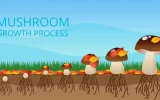When To Fruit Mushrooms Exactly? (Oyster, Chestnut & More)
Most mushroom growers get confused about the exact timing of fruiting their mushrooms, and if you're one of them, you've come to the right place. The timing of fruiting can have a significant impact on the quality and quantity of your harvest. With that, let's discuss in this article the factors that determine the right time to fruit mushrooms, whether oysters, chestnuts, or other types of mushrooms.
For oyster mushrooms, it takes 2–3 weeks to see signs of fruiting such as primordia formation, darkening of the substrate, increased humidity, a drop in temperature, and the mycelium appearing thicker. The same signs appear when chestnut mushrooms are ready to fruit, but they take at least 6 weeks to become ready.
For shiitake mushrooms, cracking of the substrate can be noticed, while for reishi mushrooms, a formation of white and reddish brown layer indicates the start of fruiting. Let's get to know more about the signs that determine when your mushrooms are ready to fruit, as well as the conditions they need to trigger fruiting.
Summary
- The exact time to fruit mushrooms varies depending on the type of mushrooms being grown. For oyster and shiitake mushrooms, fruiting starts within 2-3 weeks after the substrate has been fully colonized. For chestnut and reishi mushrooms, fruiting may take up to 6 weeks. Button mushrooms, however, take at least 3 - 4 weeks to start fruiting.
- To determine if your mushrooms are ready to fruit, look for signs such as primordia formation, color changes of the substrate, or changes in the mycelium appearance. For reishi mushrooms, you'll notice a formation of white and reddish-brown layers on the substrate surface, while in shiitake mushrooms, the substrate starts to crack or split in preparation for fruiting.
- Different types of mushrooms have different requirements for fruiting conditions in terms of temperature, humidity, light exposure, and air exchange rates.
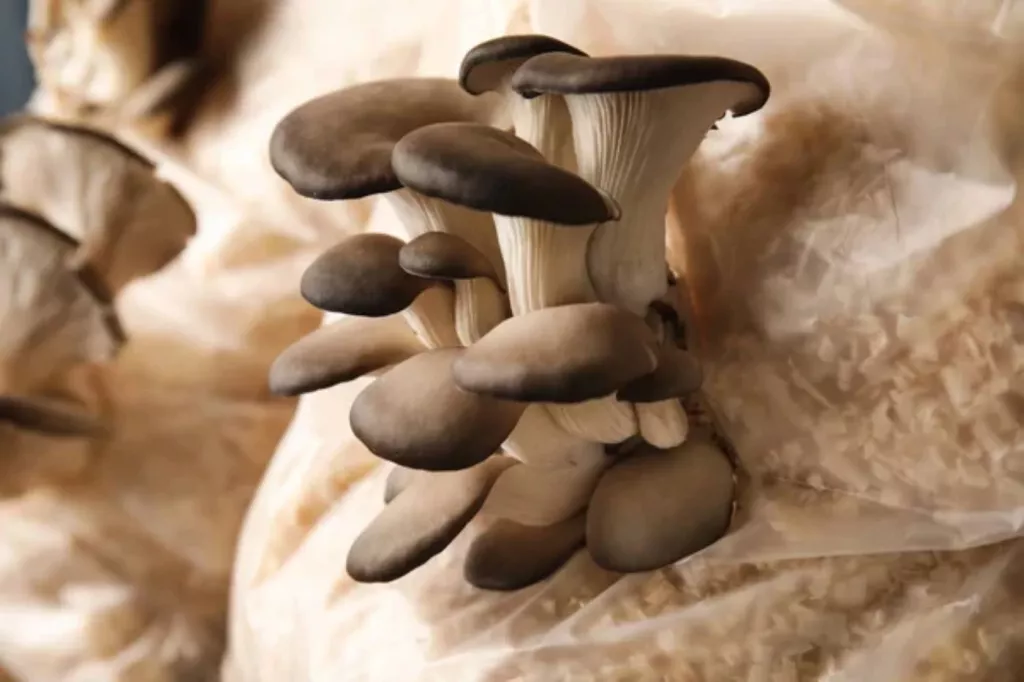
On this page:
Exact Time to Fruit Mushrooms
When it comes to growing mushrooms, one of the most important steps is fruiting. This is the stage where the fruiting body of the mushroom, also known as the mushroom cap and stem, grows and matures.
Below is a table showing the estimated time you have to wait for different types of mushrooms to fruit.
| Mushroom | Estimated Time to Fruit |
|---|---|
| Pearl Oyster | 2–3 weeks after inoculation |
| Blue Oyster | 2–3 weeks after inoculation |
| Shiitake | 2–3 weeks after inoculation |
| Reishi | 4–6 weeks after inoculation |
| Button | 3–4 weeks after inoculation |
| Chestnut | 2–6 weeks after inoculation |
Oyster mushrooms and shiitake mushrooms typically fruit within 2–3 weeks after the substrate has been fully colonized. Chestnut and reishi mushrooms, on the other hand, can take up to 6 weeks to fruit, while button mushrooms take at least 3 - 4 weeks before the mycelium will finally colonize the substrate completely.
This estimated duration will still depend on a number of factors, as well as the substrate being used to grow these mushrooms. To know which substrate fastens the colonization time, hence, the fruiting time, you may refer to this article.
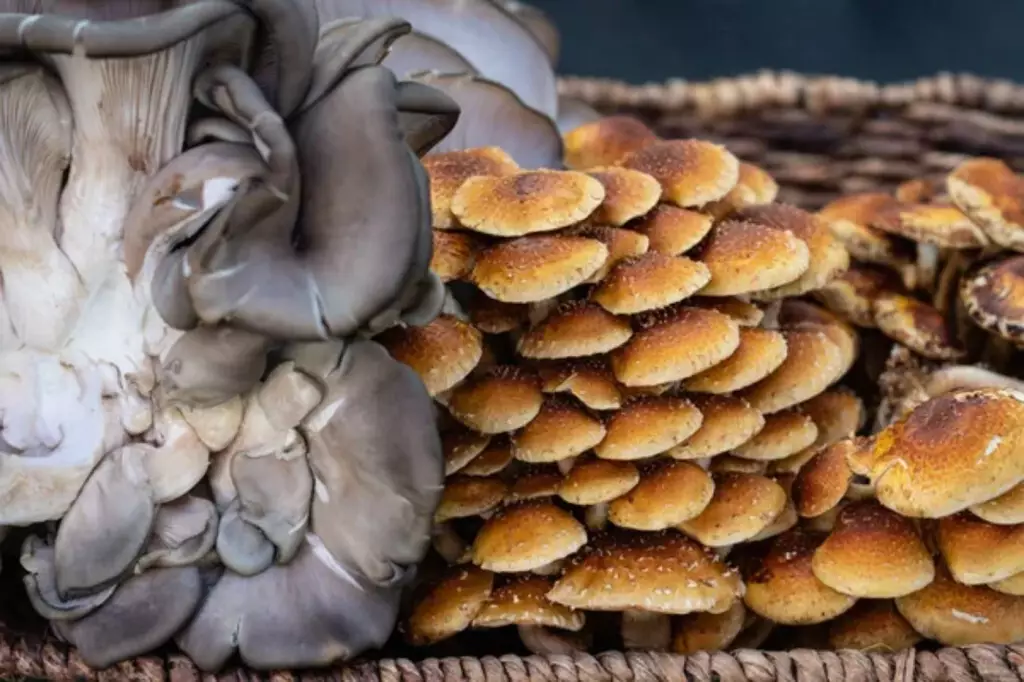
Now, aside from knowing the duration to wait for fruiting the mushrooms, one good method to determine when your mushrooms are ready is by monitoring the growth of the mycelium (the white, web-like substance that grows on the substrate) and look for signs of complete colonization.
Here are some signs you may look for which indicate that your mushrooms will start fruiting soon:
1. Look for primordia formation
Look for small bumps or knots on the surface of the substrate. These are the beginning stages of mushroom formation.
2. See if the substrate changes in color or becomes dark
As the mushrooms begin to form, the substrate may start to darken or change color.
3. Notice an increase in humidity
Mushrooms require high humidity to fruit, so you may notice an increase in humidity levels in the growing area.
4. Look for changes in temperature
Some mushroom species, including blue oysters, chestnut, reishi, and shiitake mushrooms, prefer cooler temperatures for fruiting. You may notice a drop in temperature as the mushrooms begin to form.
Meanwhile, white button mushrooms prefer warmer temperatures for fruiting. You may notice an increase in temperature instead of a drop.
5. Notice changes in the appearance of the mycelium
The mycelium may appear thicker or denser as the mushrooms prepare to fruit, this is regardless of the type of mushrooms being grown.

As for shiitake mushrooms, one indication that they are going to begin fruiting is the notable substrate cracking or splitting. Meanwhile, for reishi mushrooms, an additional sign that the mushroom is preparing to fruit is the formation of a white layer and a reddish-brown layer on the surface of the substrate.
Creating the Fruiting Conditions For Different Mushroom Types
To trigger the fruiting stage, you may also need to maintain proper environmental conditions, including setting the right temperature, providing high humidity, good air circulation, and adequate light. With the right conditions, your mushrooms should continue to fruit for several weeks.
Different types of mushrooms have different requirements for fruiting conditions, so you may need to do your research and make adjustments as needed. Here are some of the key factors to consider:
The ideal temperature to encourage fruiting
Different mushroom species have varying ideal temperature ranges for fruiting. For example, oyster mushrooms prefer a temperature range of 55–75°F, while chestnut mushrooms thrive in slightly cooler temperatures around 60–65°F.
The ideal humidity level to ensure mushroom fruiting
Most mushroom species prefer high humidity levels, typically ranging from 80-95%. One way to maintain high humidity levels is by using a humidity tent, grow room, or a fruiting chamber with a humidifier such as a monotub.
Fresh air exchange is needed for mushrooms to fruit
Mushrooms require fresh air exchange to promote healthy growth. This can be achieved through ventilation or a fan. You may opt to install a PC fan on the wall of your fruiting chamber of choice.
Mushrooms need an indirect light source to develop fruiting bodies
While mushrooms don't require direct sunlight, they do benefit from indirect sunlight or a growth light to promote development.
Types of Mushrooms and Their Fruiting Requirements
When it comes to fruiting, different species of mushrooms have varying requirements for optimal growth. In this section, we'll cover some of the most popular mushroom species and their fruiting requirements.
Below is a summarized table indicating the fruiting requirements of each mushroom type in terms of temperature, humidity, light, and air exchange.
| Mushroom | Temperature | Humidity | Light | Air Exchange Rate |
|---|---|---|---|---|
| Pearl Oyster | 18–25 °C (64–77°F) | 85–95% | 12–16 hours of indirect light per day | 4–6 exchanges per hour |
| Blue Oyster | 18–25°C (64–77°F) | 85–95% | 12–16 hours of indirect light per day | 4–6 exchanges per hour |
| Shiitake | 12–24°C (53–75°F) | 85–95% | 12–16 hours of indirect light per day | 1–2 exchanges per hour |
| Reishi | 18–25°C (64–77°F) | 85–95% | 12–16 hours of indirect light per day | 1–2 exchanges per hour |
| Button | 12–24°C (53–75°F) | 85–95% | 12–16 hours of indirect light per day | 1–2 exchanges per hour |
| Chestnut | 12–24°C (53–75°F) | 85–95% | 12–16 hours of indirect light per day | 1–2 exchanges per hour |
Oyster mushrooms require plenty of fresh air to fruit
Oyster mushrooms are one of the easiest mushrooms to grow, making them a popular choice for beginners. These mushrooms prefer temperatures between 60–75°F and humidity levels between 85–95%.
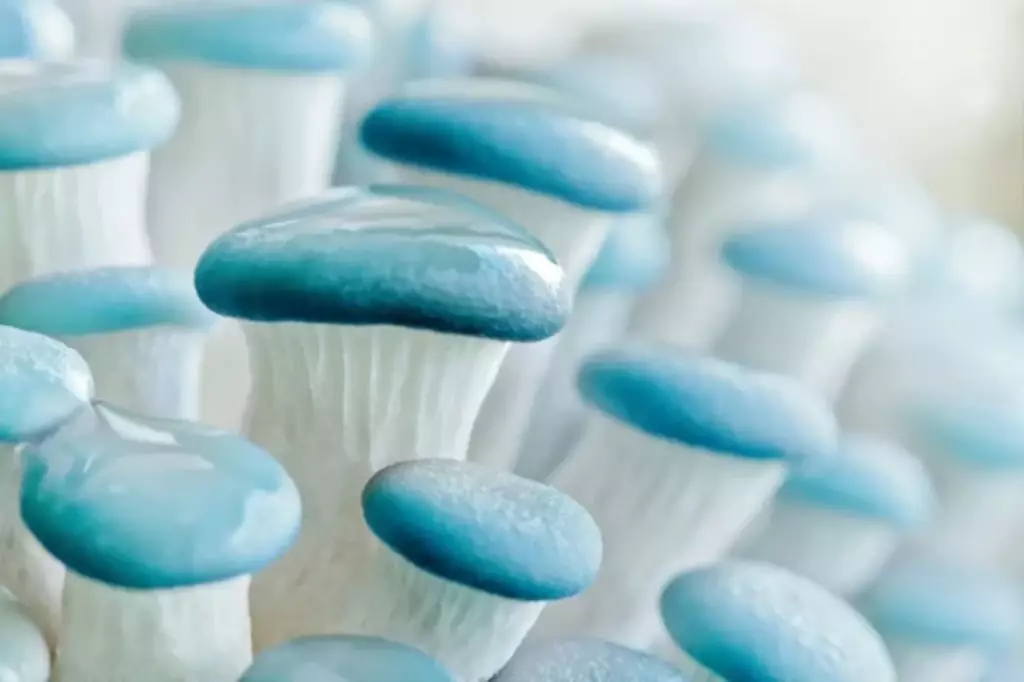
They also require a good amount of fresh air exchange to thrive. Oyster mushrooms can grow on a variety of substrates, including straw, sawdust, and coffee grounds.
Shiitake mushrooms prefer cooler temperatures to fruit
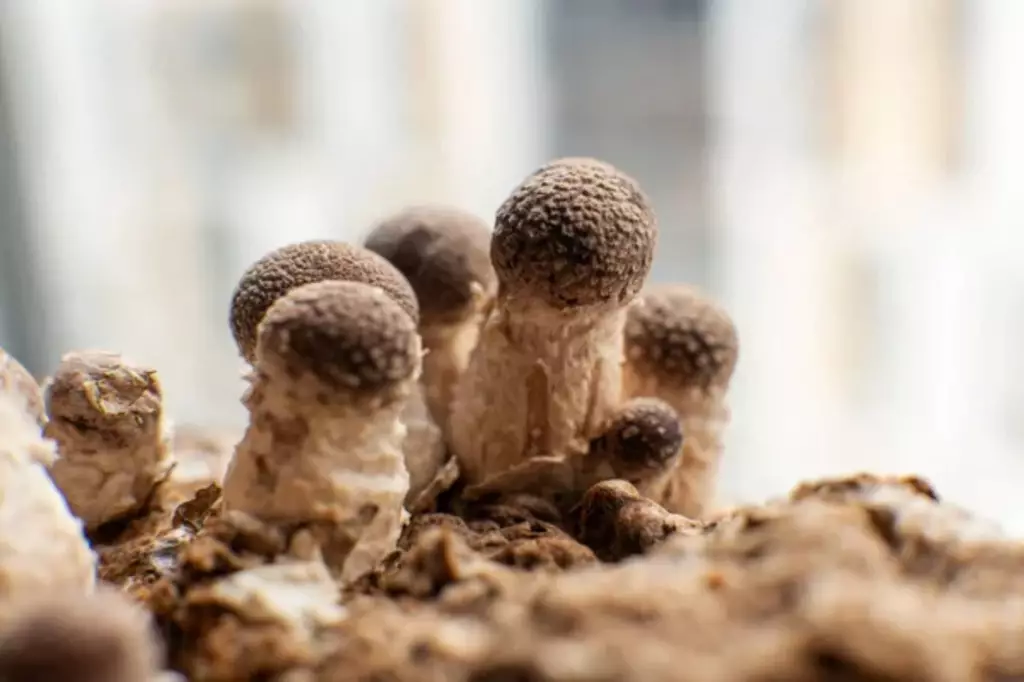
Shiitake mushrooms are gourmet mushrooms that are highly prized for their meaty texture and rich, savory flavor. These mushrooms prefer cooler temperatures between 50 and 70°F and humidity levels between 85-95%.
They require a substrate made from hardwood sawdust and can take several months to fruit, especially if grown on logs.
Chestnut mushrooms require composted straw as substrate
Chestnut mushrooms are another popular gourmet mushroom that are highly sought after for their nutty flavor and meaty texture. These mushrooms prefer temperatures between 55 and 65°F and humidity levels between 85-95%.
They require composted straw as substrate and take around 2–6 weeks to fruit.
Reishi mushrooms can take several months to fruit
Reishi mushrooms are a medicinal mushroom that has been used in traditional Chinese medicine for centuries. Their popularity is increasing because of the health benefits associated with their use, earning them a spot as one of the most profitable mushrooms to grow.
These mushrooms prefer temperatures between 68–77°F and humidity levels between 85–95%. They require a substrate made from hardwood sawdust and can take several months to fruit, with fully developed mushrooms ready to harvest only after three months from the pinning stage.
Button mushrooms require indirect light to initiate fruiting
Button mushrooms, also known as Agaricus bisporus, are the most commonly cultivated mushroom in the world. These mushrooms prefer temperatures between 60–65°F and humidity levels between 85-95%.

They require a substrate made from composted manure and take around 2–4 weeks to fruit. They require light to initiate fruiting, but they don't need direct sunlight.

